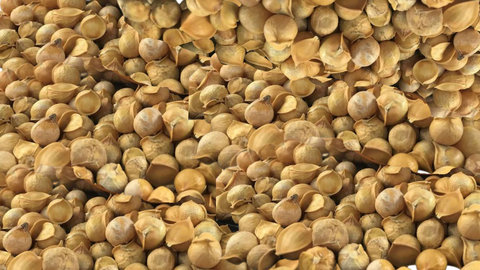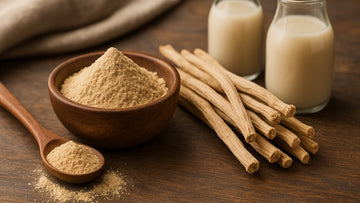Introduction:
Garlic, a culinary cornerstone in kitchens worldwide, is a flavor enhancer and embodiment of centuries-old agricultural practices and regional expertise. The Himalayan range stands out among the various regions known for garlic cultivation, boasting a unique and exceptionally flavorful variety. In this comprehensive exploration, we will embark on a detailed journey of Himalayan garlic from its inception on the farm to its presence on our tables, unraveling the intricate harvesting process that gives it a taste that is distinctly Himalayan.

I. The Himalayan Advantage:
Nestled amid the majestic peaks of the Himalayas, this region is renowned for its breathtaking landscapes, pristine environment, and nutrient-rich soil. The Himalayan advantage lies in the harmonious interplay of high altitudes and cool temperatures, creating an ideal environment for growing garlic. Buy Himalayan garlic online and derive its distinctive aroma and taste, which sets it apart from its counterparts in other regions.
The farmers of the Himalayan region leverage this natural advantage by meticulously selecting the best cloves for planting. The commitment to quality begins at the planting stage, where disease-free and high-quality cloves are carefully sown. This initial step sets the tone for a cultivation process emphasizing sustainability and organic farming practices, ensuring the long-term health of the garlic and the land it grows on.
II. Planting and Cultivation:
The journey of Himalayan garlic commences with carefully planting cloves in meticulously prepared soil. Sustainable and organic farming practices are the norm, reflecting the farmers' commitment to the environment and the quality of their garlic crops. Cultivation involves a series of nuanced practices, including regular watering, nutrient supplementation, and vigilant protection from pests.
Distinct from garlic grown in other regions, Himalayan garlic undergoes an extended cultivation process, capitalizing on the region's prolonged growing season. This deliberate approach results in a gradual maturation process, fostering the development of large and flavorful bulbs. Farmers diligently monitor their garlic plants throughout this period, providing the necessary care and attention for optimal growth.
III. Growth and Development:
As the garlic plants flourish in the nutrient-rich Himalayan soil, they progress through distinct growth stages. Green shoots sprout, and underground, garlic bulbs begin to form. The slow and steady maturation process, facilitated by the cool climate, contributes to the development of garlic bulbs with a robust flavor profile.
Farmers implement prudent agricultural practices such as mulching and weeding to maintain the overall health of the garlic crop. The commitment to sustainable farming not only ensures a quality product but also reflects the farmers' dedication to preserving the natural integrity of the Himalayan environment.
IV. Harvesting:
Harvesting Himalayan garlic is a pivotal moment that demands precision and timing. Farmers patiently await the optimal time when the leaves of the garlic plants begin to yellow and wither, signaling that the bulbs have reached their full size and are ready for harvest.
The harvesting process is delicate to prevent any damage to the garlic bulbs. Hand tools are preferred to avoid bruising or cutting the bulbs, and farmers take pride in employing traditional and manual harvesting techniques. This meticulous approach not only preserves the integrity of the garlic bulbs but also ensures the utmost care is taken during this critical stage.
V. Curing and Drying:
Following harvest, Himalayan garlic undergoes a curing process that elevates flavor and extends storage life. The bulbs are carefully cleaned of excess soil and arranged in well-ventilated spaces to dry. This curing process typically spans several weeks, allowing the garlic to develop its characteristic rich flavor.
Traditional methods, such as hanging garlic bulbs in bundles or laying them out on racks, are often employed during the curing stage. The Himalayan climate plays a pivotal role in this process, providing optimal conditions for the garlic to dry naturally. The slow drying process contributes to the concentration of flavors, resulting in garlic with a depth and intensity that is highly prized by chefs and home cooks alike.
VI. Sorting and Grading:
Once the curing period concludes, the garlic bulbs undergo a meticulous sorting and grading process. Farmers carefully examine each bulb, categorizing them based on size, quality, and appearance. This attention to detail maintains the reputation of Himalayan garlic and ensures that consumers receive a premium product.
The grading process often involves categorizing garlic bulbs into different sizes, ensuring that each packaged unit meets the highest standards. This sorting and grading phase adds value to Himalayan garlic, making it a sought-after ingredient for discerning chefs and home cooks.
VII. Packaging and Distribution:
The final journey from farm to table involves packaging and distribution. Himalayan garlic is meticulously packed to preserve its freshness and flavor during transit. Many farmers in the region prioritize eco-friendly packaging materials, aligning with the growing global emphasis on sustainability.
Local markets and specialty stores in the Himalayan region serve as primary distribution points for it after determining the Himalayan garlic cost based on the above factors. However, due to the increasing demand for this unique variety, Himalayan garlic has found its way into various international markets. This accessibility allows people around the world to savor the distinctive taste of Himalayan garlic and introduces them to the unique story behind its cultivation.
VIII. Culinary Delights:
As Himalayan garlic reaches kitchens around the world, chefs and home cooks discover the exceptional flavor profile it brings to their dishes. The garlic's robust taste, coupled with its aromatic qualities, elevates the culinary experience. From soups and stews to marinades and roasted dishes, Himalayan garlic adds a unique touch to a wide range of recipes, enhancing the overall dining experience.
IX. Embracing Tradition in a Modern World:
Beyond its culinary significance, Himalayan garlic embodies the cultural and agricultural traditions of the region. As modern agriculture continues to evolve, preserving these time-honored practices becomes crucial for the flavor of the garlic and sustaining the communities that rely on its cultivation.
Conclusion:
The journey of Himalayan garlic from farm to table is a captivating tale of dedication, expertise, and a profound connection to the land. The unique Himalayan environment, traditional farming practices, and meticulous harvesting techniques contribute to the distinct flavor that sets Himalayan garlic apart.
In a world where the narrative behind our food often remains untold, Himalayan garlic stands as a testament to the rich traditions and landscapes of the region. As consumers, taking a moment to appreciate the journey of that Himalayan garlic bulb from the farm to our table adds a deeper dimension to the culinary experience. So, the next time you savor the pungent aroma of garlic in your favorite dish, remember the labor of love that went into cultivating and harvesting that exceptional Himalayan garlic bulb. To get easy access to this culinary gem, visit the website of My Pahadi Dukan and enjoy exclusive discounts on Himalayan Garlic prices in India. So, elevate your dining experience with Himalayan garlic today.










